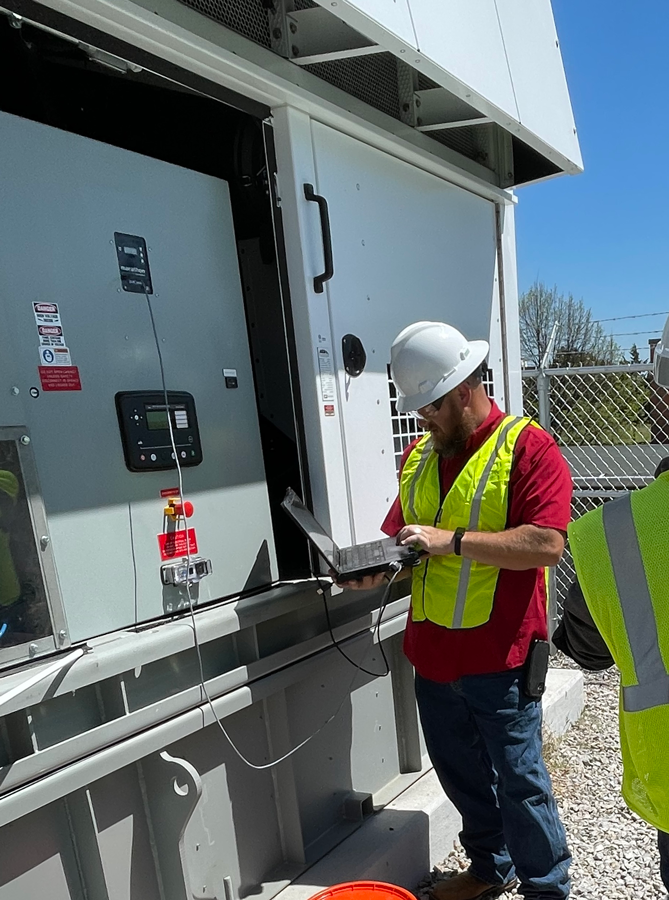As climate change intensifies, the vulnerability of our electrical grid to extreme weather events is becoming increasingly evident. From shifting tornado patterns to more frequent winter storms in unexpected regions, the impact on electrical reliability is undeniable. But the solution to these challenges goes beyond a simple investment in backup generation to ensure continuity for businesses and critical infrastructure. To truly achieve resiliency, one needs to understand how various solutions perform before, during and after backup power is needed. In other words, businesses must ask, are the results from any investment actually meeting expectations for eliminating the impact from power outages?
Weather patterns across the globe are undergoing significant transformations, and they are reshaping the landscape of electrical resiliency. The National Oceanic and Atmospheric Administration (NOAA) has observed a notable shift in tornado activity, with tornado alley gradually expanding further eastward. Additionally, regions traditionally spared from harsh winters—from California and Texas to the Northeast—have been experiencing more frequent and severe storms year-round, exacerbating the strain on the grid infrastructure.
One of the consequences of these changing weather patterns is an escalation in power outages for critical infrastructure that can disrupt business operations, incur significant financial losses, and even endanger lives. For example, large load facilities like data centers may be structurally resilient to storms, but they can face operational challenges that compromise their functionality and data integrity when the grid fails to deliver the power they require. As a result, backup power has become essential. And with a growing recognition of the need for enhanced resiliency strategies, microgrid backup power systems are emerging as a key solution.
Microgrids provide on-site, localized power generation with system management capabilities that can operate autonomously from the grid, enabling businesses and communities to maintain essential services independently during grid disruptions. And in the case of Enchanted Rock’s natural gas microgrids, the dual-purpose systems can seamlessly contribute capacity back to the grid when backup power isn’t needed. Additionally, these microgrids are continuously monitored to ensure high performance and early detection of system anomalies.

Investing in a resiliency solution like a microgrid requires careful consideration to ensure maximum effectiveness and reliability. The idea of simply having diesel gensets or even a microgrid in place is not sufficient and gone are the days of relying solely on buying equipment and maintaining it with best efforts. Businesses and communities deserve tangible evidence of how a system will perform and deliver on its promise of uninterrupted power supply when it matters most.
Access to real-world, comprehensive performance data allows stakeholders to objectively evaluate the efficacy and value of the microgrid, providing the peace of mind they need during outages. Actual performance data serves as a critical tool in maintaining a high readiness state, as well as assessing the true value proposition of microgrid backup power systems. The analysis of historical performance metrics such as uptime, response time during grid disruptions, component level, and overall reliability can gauge the system’s effectiveness. Performance data also enables continuous optimization and refinement of microgrid systems, ensuring that they remain adaptive and resilient in the face of evolving challenges. By identifying areas for improvement and implementing targeted enhancements, microgrid providers can improve the reliability and effectiveness of their systems in an iterative process.

Accurate, real-time reporting can provide the transparency customers need, and Enchanted Rock relies on a microgrid network operations center (mNOC) as well as a proprietary microgrid aggregation and control software to achieve this visibility. By constantly monitoring each deployed asset and proactively addressing any system or component issues, the mNOC and software have contributed to more than 10,000 hours of worry-free grid support. These systems work together to monitor grid disruptions and technical abnormalities for over 1,300 generator units at 300-plus locations, collecting accurate performance data for further analysis that will inform best practices.
Resiliency providers that leverage advanced technology for real-time, secure communications and embrace the digitization, monitoring, and management of backup power assets are more adept at merging those insights into the performance and readiness of a microgrid system. Data-driven insights allow providers to identify trends, anticipate potential failures and implement preventive maintenance that can minimize downtime and maximize uptime. A proactive approach is required to ensure a backup power provider meets the specific needs of a facility or community requires proactive steps. Resiliency providers that embrace digitization, monitoring and daily reporting enhance the reliability and effectiveness of your backup power infrastructure, and It’s crucial to challenge a provider to demonstrate how they deliver reliable power when it’s needed most.

Enchanted Rock’s aggregation and control software monitors assets for current available capacity and planned maintenance schedules to safeguard against outages while also empowering customers to participate in the energy market. By continuously monitoring market dynamics, customers can be notified of opportunities to shift from using generators for facility power to profitably supplying power back to the grid. This dual functionality “resiliency-as-a-service” model ensures both service reliability and increased cost offsets, contributing to a stronger bottom line and allowing customers to contribute to grid stability for the entire community.
As the grid’s vulnerability to extreme weather and other unforeseen events continues to escalate, the importance of investing in the right resiliency measures cannot be overstated. Businesses and communities must adopt a proactive approach to ensure a backup power provider meets the specific needs of their operations. Microgrid systems that leverage real data not only help those stakeholders make strategic investments and decisions, but they are also one of the most reliable means of ensuring high performance that consistently safeguards critical infrastructure against growing threats to the grid.
With more than 30 years of experience in commercial and industrial energy services and technology and innovative utility solutions, Enchanted Rock Chief Commercial Officer, Allan Schurr, is responsible for market development and expansion of resiliency solutions and partnering with utilities. Schurr is also a registered Professional Engineer in the State of California and is a co-inventor on seven patents related to distributed energy.




